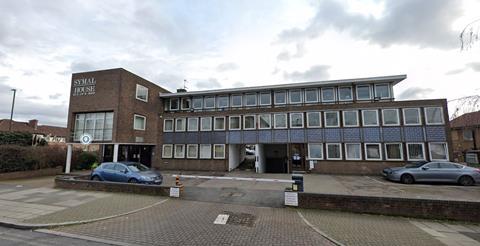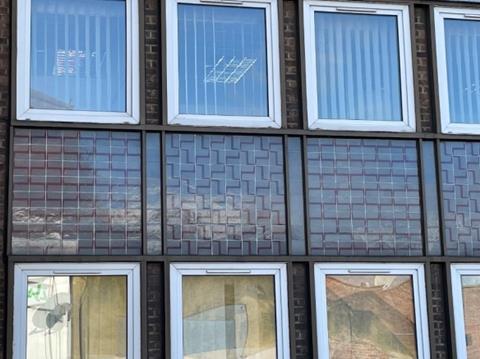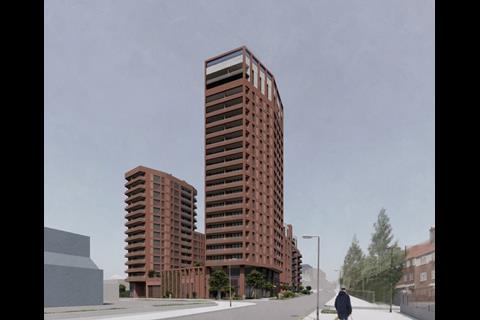Brent scheme will see the demolition of one of the last surviving commercial projects designed by the self-build architect

Brent council has given the green light for plans to demolish one of Walter Segal’s few remaining office projects and replace it with a 20-storey residential tower.
The three-storey Symal House, located on Edgware Road near Burnt Oak tube station, was designed by Segal and his wife Eva in 1955 for construction products manufacturer Tretol.
The locally listed building will be replaced by a three-block development consisting of two linked towers and a podium level under plans drawn up by architect Base Associates for private developer Sheen Lane.
Brent councillors voted to back the planning officer’s recommendation to approve the 252-home scheme last week.
Also working on the project team is planning consultant Pegasus, landscape architect Exterior Architecture, structural engineer Barret Mahony and cost consultant Savills.
The 2,000sq m office, one of a handful of commercial projects designed by Segal, features a prominent entrance under pilotis and typical mid-century brickwork. It is also faced with a series of decorative ceramic tiles that are the only known examples from a Segal building.
A heritage report submitted by Pegasus as part of the scheme’s application summarised the office as of “medium” significance due to several later alterations, including an extra storey and a rear wing.
> Also read: 50 Wonders | Dowen Farmer Architects: Walters Way, Lewisham
The report also said the block had a lesser value as it was not constructed using the self-build method Segal is best known for, although it noted the historic value of the ceramic tiles, which will be reused on the new residential scheme.

Brent’s planning officer said the heritage harm caused by the proposals would be outweighed by the “substantial social and economic benefits” of redeveloping the site and providing new homes, 20% of which will be affordable.
Heritage group The Twentieth Century Society told Building Design the option of launching a listing bid for the office will be discussed at its next committee meeting, in January. A spokesperson for the group said Segal is a “significant architect and we would normally fight for or support the retention of any of his buildings”.
Although Segal, who died in 1985, never gained mainstream fame, he has become a cult figure for many architects.
His ‘Little House’, a temporary structure erected in the garden of his former home in north London ended up standing for over 50 years and became considerably influential due to its minimalist, light-weight design.
The style of the ‘Little House’ went on to inspire a series of self-building communities in Lewisham established between 1979 and 1987.
The communities are still going strong, with 33 new self-build homes given the green light by Lewisham council in 2018.
In 2020, Morris & Company was given the go ahead for plans to add a two-storey timber extension to the main house at Segal’s former Highgate home.



















2 Readers' comments